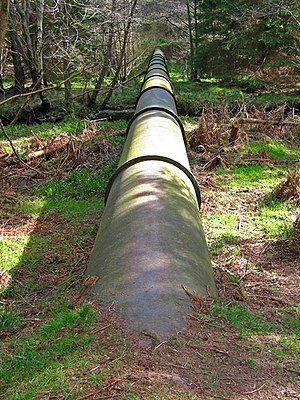Those pipes, pumps, dams, treatment plants and other water infrastructure that deliver and supply our water are facing pressure as they age and populations grow both in Colorado and across the county. The newest report from the Johnson Foundation at Wingspread, Catalyzing the Transformation of U.S. Water Infrastructure, discusses making needed advances in water infrastructure in a sustainable way, and in a way that allows cities to better adapt to a changing climate.
As opportunities to upgrade or revamp systems arise, decision makers would be wise to consider the need to adapt to both acute, episodic events (e.g., natural or man- made disasters) as well as slow, chronic trends (e.g., population growth or decline, drought). The application of triple-bottom-line analytical methods that consider environmental, economic and social outcomes can help decision makers determine a robust picture of the best water infrastructure solutions for their utility or community and help to build public support for capital investment.
Whether the system is large or small, every foot of pipe must be monitored, maintained, repaired and replaced. It’s a massive investment each utility must make every year, and the size of that investment is growing. Denver Water, like other utilities, keeps careful track of its infrastructure. Watermain breaks are major problems for utilities because they usually require extensive excavation to access and repair, are highly visible, and often disrupt traffic. Industry guidelines indicate that there should be no more than 15 main breaks annually per 100 miles of pipe, and Denver aims even lower, for no more than 13. The utility uses an extensive set of matrices to determine—based on age, use and location—which mains are likely to break, then sets out to repair or replace them ahead of time.
Nationwide, America’s aging water infrastructure is being eyed warily as governments study how best to replace old systems and make sure new water systems can meet the demands of a growing populace and ever-stricter water quality regulations. According to a new report by the American Water Works Association, “Buried No Longer,” U.S. communities must spend more than $1 trillion over the next 25 years to replace old water systems and install enough new storage and delivery capacity to cover additional growth.
Charting New Waters will proceed with a multipronged, forward-looking strategy focused on inspiring leaders in different sectors to take actions that set a course toward the water infrastructure of the future.
Related articles
- The End of Cheap Water (ecowatch.com)
- The end of cheap water … and one-third of clean water is used on lawns (alpinedailyplanet.typepad.com)
- Lamar: The city is lining up financing for a $2 million pipeline replacement project (coyotegulch.wordpress.com)


 Print
Print
Reblogged this on Coyote Gulch.
Reblogged this on Mile High Water Talk.